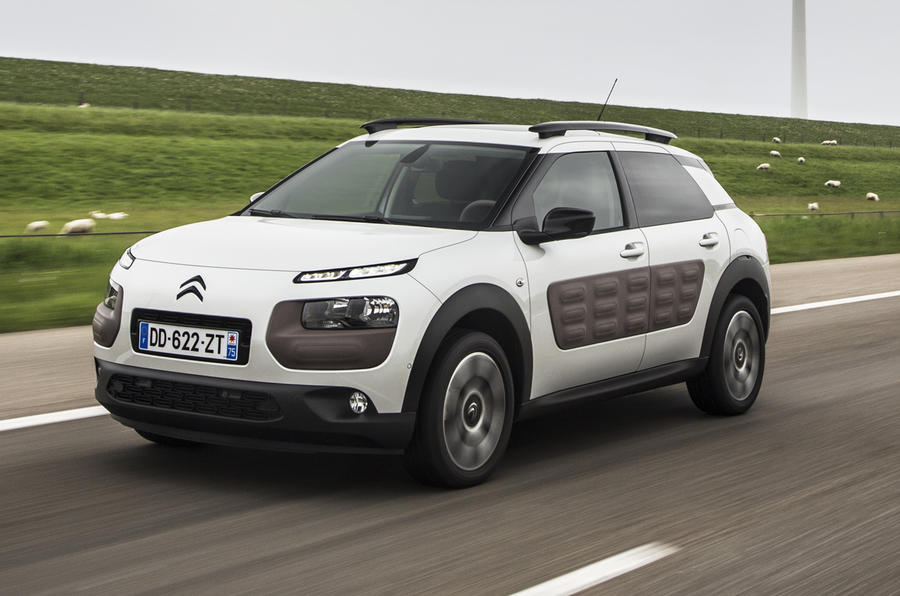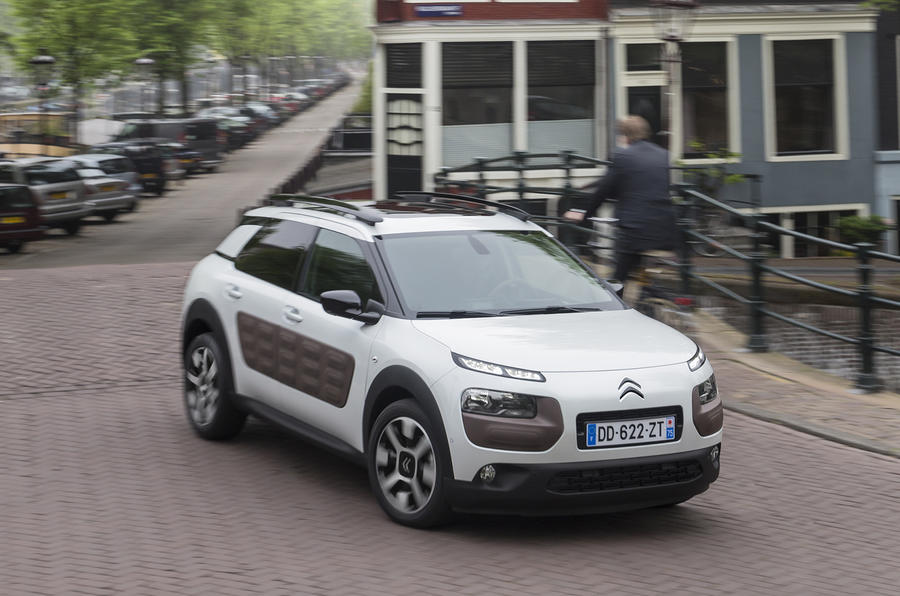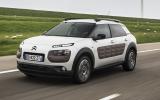What is it?
The Citroën C4 Cactus is the new C-segment crossover that will go on sale in the UK in the autumn, tested here with the entry-level three-cylinder 1.2-litre naturally aspirated petrol engine.
This is a new-generation power unit, already known in the Peugeot 208, featuring double variable-valve timing on intake and exhaust ports, plus one balancer shaft, to cancel out as many vibrations as possible.
Compared with the old four-cylinder engine family it replaces, this new three-pot is 25 per cent lighter, internal friction losses are reduced 30 per cent and Citroën claims it emits 25 per cent less CO2.
We drove the naturally aspirated 81bhp version mated to a five-speed manual gearbox. Also available is a 74bhp version and later there will be a turbocharged variant with 109bhp, which promises to be the best option in the new C4 Cactus range.
C4 Cactus is a front-wheel-drive-only crossover with no specific off-road capabilities, made on PSA’s Platform 1, the same that underpins Citroën C3, which means MacPherson struts up front and torsion beam in the rear suspension.
It is lighter than any C4 by as much as 200kg. This PureTech 82 Cactus is quoted at 965kg. At 4157mm long its smaller then Citroën C4 (4329mm) but the wheelbase is only 10mm shorter.
Our test car was fitted with 205/55 R16 low rolling resistance tyres, but buyers can opt for 15in rims.
















Join the debate
Add your comment
. . before they part with even £13k !!
I am pretty sure that the simple oblong instrument panel (in front of the driver), is a similar shape to the 2CVs that I remember. The 2CV front windows were also hinged, but horizontally and at half height. There is probably some reason why the Cactus rear windows have to be front hinged, rather than top hinged.
I really don’t “get” the ski-roof rails, other than they add some “substance” (height), to what would otherwise be a merely “jacked-up” normal hatchback (photo number 3 of 18).
I’ve yet to try the vehicle myself, but as merely a “jacked-up” normal hatchback, this implies a legs-forward driving position - rather than the more upright, knees and hips at the 90 degrees angle (that I prefer), which is associated with (true) “cross-overs” and SUVs.
I wish Citroen every success with the Cactus, but customers are going to have to walk-past an awful lot of other cars - before they part with even £13k !!
Autocar becomes more
I agree Autocar seem to have
I notice there is something of the BMW i3 in the minimal dash design with twin screens too, perhaps a trend developing?
Great comments, shame about the review...